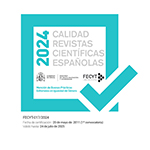Los mapas geopolíticos de la Unesco: entre la distinción y la diferencia están las asimetrías. El éxito (exótico) del patrimonio inmaterial
Resumen
El patrimonio inmaterial es una categoría política confusa y contradictoria. La democratización y universalización del patrimonio cultural ha permitido su profusión y revalorización. Ahora bien, pese a su actual protagonismo, su construcción responde tanto a las viejas demarcaciones de antaño como a un ejercicio globalizado de simetrías aparentes. Es decir, del colonialismo al nuevo imperialismo parece que las cosas no han cambiado sustancialmente. Así, podemos afirmar que hemos asistido a un ‘re-bautizo’ de lo antes llamado científicamente ‘folck-lore’. Y en ese cambio de la concepción patrimonial hemos pasado: de poner el acento en la distinción a poner el énfasis en la diferencia; de la perseguida conservación a la necesidad de la salvaguardia; del acento en el resultado al énfasis en el proceso; del confinamiento político-científico de la definición a la voluntad de subrayar la participación y la comunidad. En este artículo pretendemos acercamos al nicho normalizado del patrimonio inmaterial, atendiendo a su institucionalización, discurso y praxis hegemónica. Para ello realizaremos un análisis conceptual como marco para atender a su edificación y su plasmación en un particular mapa geopolítico.
Descargas
Descarga artículo
Licencia
La Revista de Antropología Social, para fomentar el intercambio global del conocimiento, facilita el acceso sin restricciones a sus contenidos desde el momento de su publicación en la presente edición electrónica, y por eso es una revista de acceso abierto. Los originales publicados en esta revista son propiedad de la Universidad Complutense de Madrid y es obligatorio citar su procedencia en cualquier reproducción total o parcial. Todos los contenidos se distribuyen bajo una licencia de uso y distribución Creative Commons Reconocimiento 4.0 (CC BY 4.0). Esta circunstancia ha de hacerse constar expresamente de esta forma cuando sea necesario. Puede consultar la versión informativa y el texto legal de la licencia.












